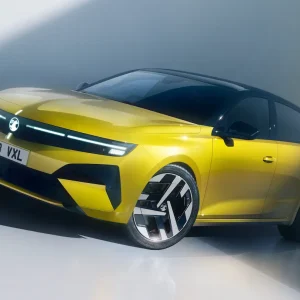Industy experts have raised the prospect of fleets paying higher emissions-based tax bills following the introduction of the Worldwide Harmonized Light Vehicles Test Procedure (WLTP), which will replace the existing New European Driving Cycle (NEDC) test in September 2017 and is expected to inflate official vehicle CO2 figures due to its stricter rules.
Speaking to BusinessCar, Phil Stones, chief engineer, powertrain, at vehicle testing facility Millbrook Proving Ground, which carries out the current testing regime, said: “There’s going to be a time where you’ll have two vehicles – let’s say a Ford Focus and an identical Ford Focus – that are a model year apart, that could have completely different CO2 and fuel consumption figures just because they’ve been approved over different drive cycles.
“In terms of fuel consumption and what the end-user gets, it will make no difference, but if a vehicle is tested over a harsher cycle and gets a harsher CO2, that’s what it’ll be declared with, so the exact same vehicle will, by default, fall into a higher tax band.”
The increase in CO2 will vary, but Stones added: “We’re seeing some vehicles where it doesn’t make any difference at all and others where it makes a 10% difference.” Although official figures are yet to be published, such an increase would see a typical diesel company car with emissions of 99g/km increase to 109g/km and jump two benefit-in-kind bands, from 21% to 23% under HMRC’s 2017/2018 rates.
However, it has been suggested that the Government could use the transition as a cash cow if it leaves the current taxation system in place after the WLTP has been introduced.
“Will the Government adjust the tax structure to be revenue-neutral or will they use this as an excuse to get more revenue?” said Nick Molden, chief executive officer at Emissions Analytics, a vehicle emissions measurement company. “If they don’t change the bandings and CO2 numbers go up then everyone will automatically have to pay more. That would be very politically controversial, but they might do it.”
Stones, who is a member of the Society of Motor Manufacturers and Traders’ working groups that advise the Government on such issues, described the Treasury as “a bit difficult” and added that “they haven’t been that receptive” to the issue, while others have suggested that the Government has yet to establish how it will handle taxation after the introduction of the WLTP.
“We’re not sure exactly what will happen with benefit-in-kind,” said Dr Tim Barlow, technical manager for air quality and emissions at the Transport Research Laboratory. “It’s possible that a conversion back to the NEDC value will be used in the short term, then in the long term the banding [may be] adjusted in line with the WLTP.”
Enforced across the Continent by the European Commission, the WLTP is designed to crack down on loopholes sometimes exploited by manufacturers in the current NEDC system, and produce mpg and CO2 figures more reflective of real-world driving conditions.
It will initially apply only to newly introduced cars, but existing new models will be subject to the test from September 2018, while optional equipment will also have an effect on the vehicle’s overall CO2 rating.





